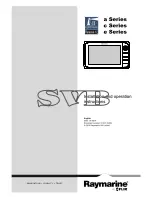
12
8.0 Cleaning / Disinfection
The way the suction device is used determines its reliability
and safety. These hygiene measures are indispensable
for protecting the patient and the user and for maintaining
a safe and reliable suction device. When the suction
device is used on another patient or in case the device
has been oversucked a professional reprocessing by
the manufacturer, by a certifi ed ATMOS partner or by a
specialist, who is authorised by ATMOS, in compliance
with Medical Devices Operator Ordinance, Medical
Devices Act and BV-Med rules is required (please see
chapter 9.2 reprocessing).
8.1 Basic information
●
The following cleaning measures must only be
performed if the device was used. When the device
is only rarely used then a function check must be
conducted at least every three months. Only when
you adhere to these points the function of the device
can be guaranteed.
●
We recommend you to document any maintenance
work and also any exchange of parts.
●
Please always wear disposable gloves for any work
you perform.
●
Prior to cleaning the device please remove and dispose
all disposable parts like filter, fingertip and catheter.
●
Prior to cleaning please remove the mains cable from
the device.
●
The described measures for cleaning and disinfection
do not replace valid rules for operating the device!
●
Please observe the instructions for use prescribed
by the manufacturers of disinfectants. Especially
regarding concentration and regarding their
suitability for use.
●
Attention: The lid parts and silicone hoses might get
dyed by some disinfectants; a fact which does not take
effect on the attributes of the materials.
●
Basically all parts (canister, cover, overflow safety and
hose) which come into contact with suction material
must be cleaned, disinfected. Single-use parts like, for
example, filters, catheter, fingertip must be exchanged
as soon as the device is used in another patient.
Please see the different instructions for cleaning
(chapter 8.3).
●
In case the suction device is used in one patient only
device and accessories should, for hygienic reasons,
be cleaned and disinfected. Please see the different
instructions for cleaning (chapter 8.3).
●
Cleaning in an automatic cleaner and disinfecter is
also possible (hose connector, secretion canister and
canister lid).
Thermal disinfection is carried out at 93° C.
8.1.1 Bacterial fi lter
●
Exchange the bacterial filter when changing the
patient. ATMOS recommends: Replace the bacterial
filter after 14 days, even if there is no patient change.
●
Replace the bacterial filter with a new filter if it is
discoloured, contaminated or oversucked.
● Pay attention to storing a sufficient number of
replacement bacterial filters.
8.1.3 Fingertip
●
Fingertip is not included in delivery.
●
Prior to using the device in another patient the fi ngertip must
be exchanged.
●
In case the device is used in one patient only we recommend
for hygienic reasons the exchange of the fi ngertip every day.
8.1.4 Secretion canister
●
The secretion canister must always be disinfected with an
instrument disinfectant recommended on page 14 in case the
device is used in another patient. Prior to disinfection please
take care to empty the canister and to rinse it with clear water
in order to increase cleaning effi ciency.
Please observe the instructions for use of the relevant
disinfectant solution!
●
In case the device is used in one patient only we recommend
disinfection of the canister every day as described above.
●
For hygienic reasons we recommend to empty the secretion
canister after every suction procedure and to rinse it with clear
water.
Information on how to remove the canister you will fi nd in
chapter 5.2 on page 9.
8.1.2 Suction hose, hose connector and
vacuum hose
●
Suction hose and hose connector must always be disinfected
with an instrument disinfectant recommended on page 14 in
case the device is used in another patient. Prior to disinfection
or autoclaving the parts must be rinsed with clear water for
at least 10 seconds in order to increase cleaning effi ciency.
Please observe the instructions for use of the relevant
disinfectant solution!
●
In case the parts are used in one patient only we
recommend an exchange every 4 weeks.
●
In addition we recommend to thoroughly rinse hose, hose
connector and vacuum hose with clear water and to disinfect
them at least once a day as described above.
!
!
!
8.1.5 Canister lid
●
The canister lid must always be disinfected with an instrument
disinfectant recommended on page 14 in case the device is
used in another patient. Prior to disinfection please take care
to remove the bacterial fi lter from the lid and to disassemble
the lid into its single components (lid, fl oat ball and hose
connector). Prior to disinfection the parts must be rinsed with
clear water for at least 10 seconds in order to increase cleaning
effi ciency. Afterwards the parts have to be disinfected.
Fig 17.













































